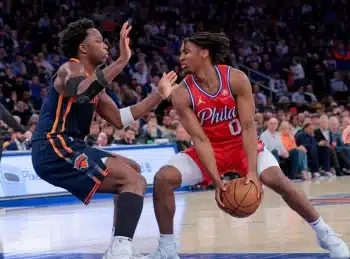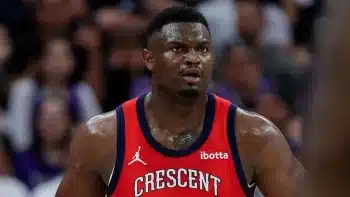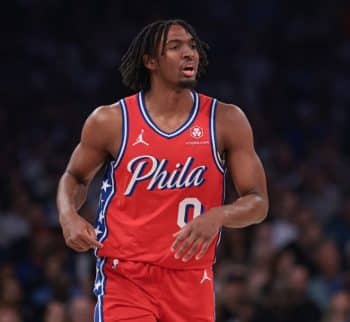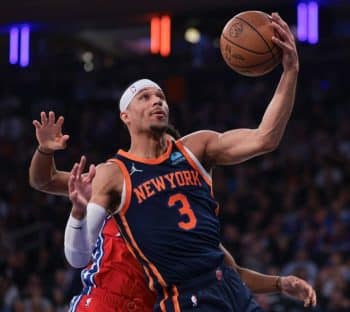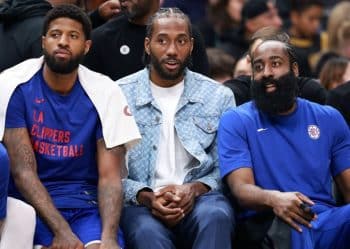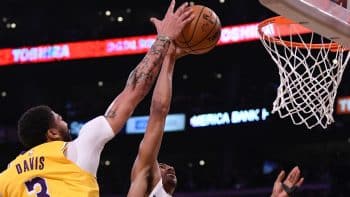NBA News Wire
Silver’s address touches on number of issues
NEW YORK — NBA commissioner Adam Silver is a self-professed basketball junkie, who often flips through NBA league pass every night and finds compelling games to tune into.
“I love where our game is right now,” Silver said at his second state of the league address Saturday night. “I don’t think it’s ever been more free-flowing, more exciting for the fans. As someone who watches a lot of games on our League Pass, there’s seemingly interesting games on every night among our teams in the league. So I’m very happy with where the game is right now.”
Silver’s excitement in the game could be interrupted in a few years if there’s another labor stoppage. The current Collective Bargaining Agreement negotiated in the fall of 2011 was signed for 10 years but the player’s union can opt out in 2017.
A sticking point could be the split of revenues from the $24 billion television deal that was reached in early October. Under the current CBA, the players receive 49 to 51 percent of basketball related income and while the percentage will remain the same, the amount of revenue will increase significantly in 2016.
Silver has proposed a concept of “cap smoothing” that gradually phases in the money to teams but on Friday the NBPA unanimously rejected that idea.
“At the time we negotiated the new (collective bargaining) deal, we weren’t projecting that the television increases would be as large as they are,” Silver said. “We weren’t anticipating this many years out that we would have this quick a jump in our television rights fees but that’s where the market has taken us. As a result of those big increases that we know will now come in the 2016-17 season, we approached the union with a so-called smoothing concept.
“Under that smoothing concept the players would receive 51 percent of the money that year but what we proposed we would lower the cap, artificially as the union characterized it to a lower level than what would otherwise be 51 percent of the revenue. The delta between where we lowered and the 51 percent would be paid in a lump sum to the union to be distributed to all the players. That way there would be a smoothing in of the increases and you wouldn’t see a one-year spike in the salary cap. That’s something we presented to the union. Ultimately it’s up to them to decide what’s in the interests of the player’s association. I have a feeling there’ll be additional discussions.
The concept of “cap smoothing” is designed to avoid potential negative ramifications of the windfall when the salary cap increases from its present $63 million to the range of roughly $80-$90 million in the first year of the new television deal.
“I don’t want to act like it’s a terrible problem to have,” Silver said. “We’re thrilled that based on the interest in the NBA we’re able to command these big increases in the television market. We will live with our deal. It was structured in a way where 51 percent of our revenue in essence gets paid to our players.”
From the player’s perspective, it’s a concept that National Basketball Player’s Association executive director Michele Roberts believes could hurt older players or fringe players.
Among the potential negative consequences is that a significant increase in the cap would give the larger markets such as New York and Los Angeles an easier opportunity to undo past missteps with the luxury taxes.
Also addressed by Silver were issues such as scheduling and the reduction of back-to-backs. This season, teams are averaging about 20 back-to-backs and Silver would like to gradually reduce those along with playing four games in five nights.
“One of things we’re hoping to address for next season is to come close as we can to eliminating the four games in five nights,” Silver said. “It’s a math formula at the end of the day in terms of the numbers of days in the season and the number of games we play but we think we can make a dramatic reduction there.”
One of the possible solutions could be starting the season earlier in October, having more games on Thursdays and Sundays and having arenas create more possible open dates in the events schedule.
“We hear everyone loud and clearly, certainly our players, certainly our teams, that there’s nothing more important than the health and welfare of our players. Ultimately, we want to see our players get appropriate rest and playing at the highest level.”
Additionally, Silver discussed the proposed changes to the draft lottery to further discourage teams from tanking. A proposal was passed by half of the owners at the October Board of Governors meeting, but three-fourths of owners (23) must approve any such measure and Silver will re-visit it at the April meeting.
Under the original proposal the first six picks would be determined by the lottery system. Currently, the first three picks are determined by the lottery.
“We believe we’re going to need to take a fresh look at the Draft lottery,” Silver said. “I don’t think the system is as broken as some may suggest but it’s going to require a tweak.”
Another hot topic was adjusting the playoff system to ensure the best 16 teams get in, instead of the current format where the top eight from each conference qualify. That talk intensified, recently, given that both Charlotte and Miami would make the playoffs at 22-30. In the West, meanwhile, two teams above .500 — Oklahoma City and New Orleans — would not qualify for the postseason.
“I understand the notion of that we should have the absolute 16 best teams competing in the playoffs, seemingly regardless of conferences and divisions,” Silver said. “I am a believer in the conference and division system.”
